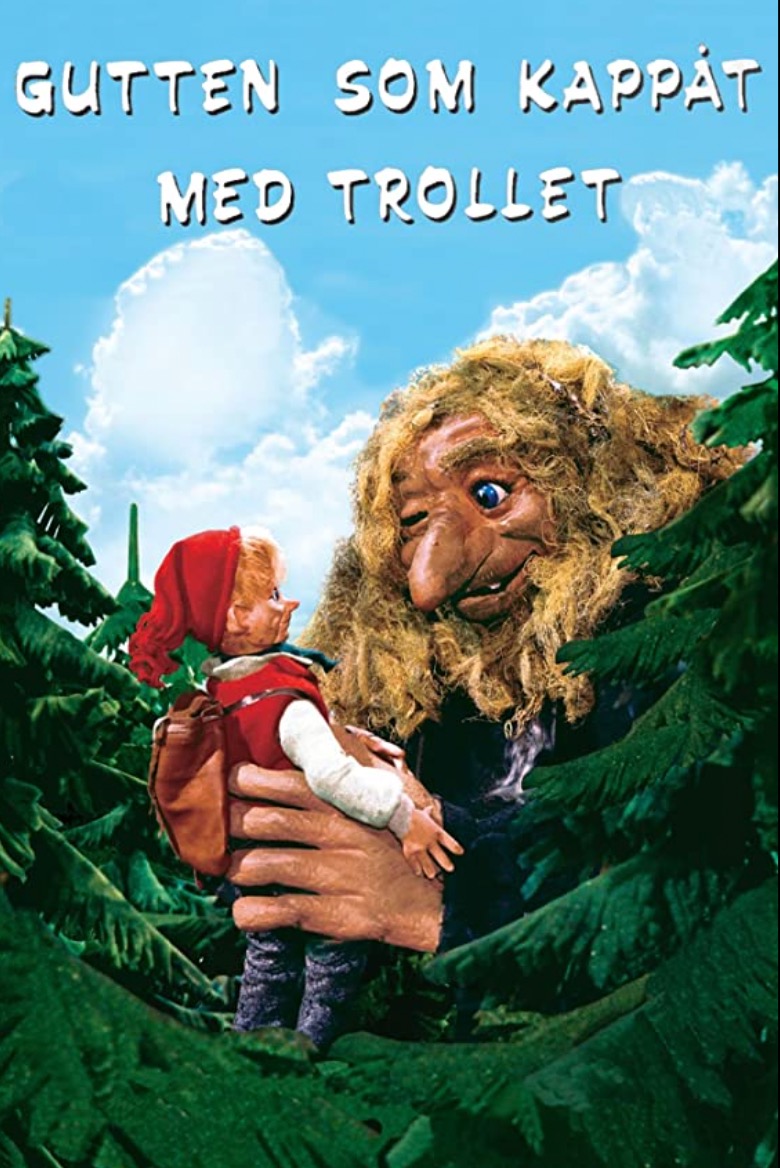Description of Informant
NF (21) is a Norwegian-American, born and raised in Trondheim, Norway before coming to Colorado for middle school. She is fluent in Norwegian and English, is a trained dancer, and presently studies screenwriting and acting at the University of Southern California.
—
Context of Performance
The informant, NF, sits in her bedroom opposite the collector, BK, her friend and classmate.
Performance
NF: So this is… a Norwegian fairytale that I first became familiar with because it was in a Norwegian fairytale book that was read to me when I was young. But, it was also turned into a movie. And it’s a really old movie, it’s gotta be claymation. And it’s bizarre, and it’s kind of creepy, but just seeing the poster of that movie, I was like “oh yeah, I definitely watched this movie a ton when I was a kid.” It’s still very nostalgic and it triggers a lot of memories. So fairytale-turned-movie.
NF: It’s called… and I can spell this out for you later, but’s called Askeladden som kappåt med trollet. Which means… Askeladden is the main character’s name, and it pretty much means “Ash-Boy.” Like Cinderella but he’s a boy. And then som kappåt med trollet which means “who fought the troll” [informant corrects this title later, see Collector’s Reflection]. Cuz trolls are like huge figures in all of Norwegian fairy tales. We have troll statues everywhere. It’s a big part of the culture. So this is what I remember from it.
NF: It’s about this boy, who has two older brothers. And he’s the smaller, younger one. So he’s kind of confined to just cleaning the house and sitting by the hearth. You know, Cinderella again. And I think… the dad needs wood… for the fire? So he sends out the oldest son to go chop down a tree. And when the first son goes he hears a troll that goes like, you know, “You’re chopping down the trees in my forest! I’ll eat you!” And he goes, “Oh no!” and he runs home. So the dad says, “You’re a wimp.” And he sends out the second son and he is a wimp too. He encounters the troll and comes running back.
NF: So finally, the youngest son is like, “I’ll go!” And they’re like, “Haha sure you will.” So he packs a little lunch, and he goes out, and he hears the troll. And I think— I really hope this is right because if I make this up it’s bizarre— but I think he takes out a block of cheese. And he squeezes it. And you know sometimes cheese has liquid in it? So the liquid comes out and so he’s looking at this troll and he’s like, “No, you’re gonna chop down this tree or I’ll hurt you! And this is a white rock.” So he pretends the cheese is a rock and that he’s capable of drawing water from stone. But it’s cheese. So basically he terrifies the troll, and the troll is like, “No don’t hurt me! I’ll do whatever you want.” So he basically gets the troll to cut down all this timber and to go fetch water and all these things that he is supposed to do himself.
NF: Finally, for whatever reason, they end up at the troll’s house It’s probably like the sun’s going down, it’s late, the troll lives closer than the little boy so he’s like, “Why don’t you come back to my place?” Back to the troll’s place. And the boy has now scared the bejeezus out of the troll. So he has the troll doing his bidding. And what he does, is they’re eating porridge. I think it’s porridge, because porridge is a very popular, traditional cultural food in Norway. They’re eating porridge, and somehow the kid makes it seem like he’s eating an endless amount of porridge. He probably cuts a hole in the bowl, or does something bizarre that I can’t remember. But he eats so much porridge, supposedly, and he forces the troll to keep up with him. It’s basically a masculinity battle. He’s like, “Oh you’re a wuss! You can’t eat as much as I can? Keep up!” And the troll becomes so full that he can’t move. So he passes out, and the young boy runs away. He gets away and he has, you know, the timber for his family.
NF: So yeah, that was a very popular story. And I think that’s how it ends.
Collector’s Reflection
Askeladden som kappåt med trollet actually translates to “Askeladden, who had an eating match with the troll.” The story seems to follow the traditional “rule of threes,” where two failed attempts precede the final, successful attempt. In this case, that means Askeladden’s two brothers, who failed to beat the troll, and Askeladden himself. Many tales include this three-part structure, including another performance by the informant NF. For the tale Reve-enka, please visit this link:________.
Below is the poster of the claymation film adaptation that NF was familiar with growing up.

